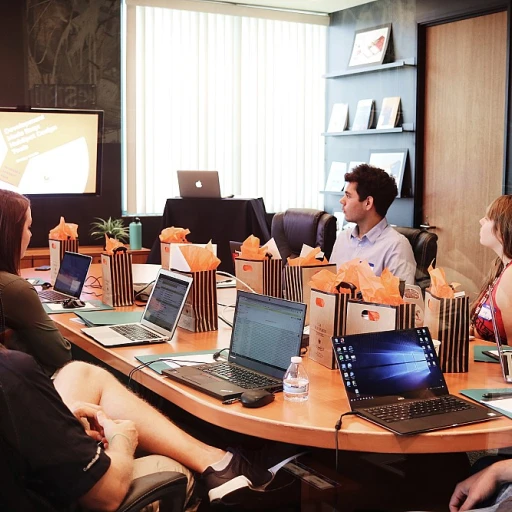
Defining Favoritism in the Workplace
Unpacking Favoritism in Professional Settings
Understanding favoritism in the workplace can contribute significantly to addressing its impact on employee experience effectively. At its core, favoritism is the preferential treatment of certain employees based on personal relationships rather than individual performance or merit. It's a practice where managers might grant preferred employees exclusive opportunities, promotions, or recognition, often leading to unwarranted advantages. Favoritism doesn't just stop at promotions. It's evident when a manager communicates more openly with certain team members, or consistently allows specific individuals to bypass standard procedures. This kind of preferential treatment can perpetuate an unfair work environment, undermining the principle of diversity and inclusion. Importantly, recognizing the presence of favoritism is the first step in addressing its influence. Consistent patterns in decision-making processes that favor a select few can be telltale signs. Discrimination in assignments and recognition can lead to employees feeling undervalued, thereby impacting mental health and their overall performance. In the broader context, favoritism can contribute to environments where team dynamics and productivity suffer. When employees perceive inequity in treatment, it can foster resentment, discourage open communication, and diminish team cohesion. Moreover, it might encourage similar behaviors among team members, further eroding trust and fairness within the work environment. Thus, exploring strategies for identifying and mitigating favoritism is crucial. These efforts can help cultivate a culture that values fairness and equity, essential components of a healthy workplace culture. By doing so, organizations can prevent workplace favoritism from hampering employee experience and ensure that opportunities are based purely on merit and performance.The Psychological Impact on Employees
Psychological Consequences of Favoritism in the Workplace
Experiencing favoritism in the workplace can lead to significant psychological impacts on employees. When an employee perceives that others receive preferential treatment, their mental health and job satisfaction can take a substantial hit. This often manifests as feelings of inadequacy, decreased motivation, and an erosion of trust in both managers and colleagues. Concerns about equitable promotions and fair opportunities based on merit rather than personal relationships may arise, contributing to a toxic work environment. When preferential treatment is evident, it can cause employees to feel undervalued or unfairly treated. This perception can lead to increased levels of stress, anxiety, and even depression, impacting overall work performance and mental well-being. As trust in management wavers, disgruntlement grows, and employees may begin questioning their own competencies. Indeed, favoritism can disrupt the team's performance management process, making it challenging to foster open communication and cooperation among team members. Furthermore, the presence of favoritism workplace practices can erode a culture of diversity and inclusion, which is essential for a healthy work environment. Decision making that appears based on personal affinity rather than objective criteria may lead to discrimination, hampering an organization’s ability to grow and adapt. In this environment, unfavored employees may experience a decline in opportunities, affecting not only their current role but future career advancement as well. It is crucial for organizational leaders to become aware of signs favoritism and work diligently to implement strategies that promote fairness for all employees. In the broader scope, understanding these issues helps to highlight the importance of addressing favoritism through appropriate performance reviews, ensuring the decision-making process is transparent and equitable across the board. Promoting a culture of fairness and equity is key to mitigating the negative effects of preferential treatment in the workplace, thereby improving overall employee experience.Effects on Team Dynamics and Productivity
Influence on Group Cohesion and Output
Favoritism in the workplace, whether intentional or not, can have far-reaching effects on team dynamics and overall productivity. When managers show preferential treatment, employees who are not favored may feel demoralized and unappreciated. This can severely impact their motivation and willingness to collaborate actively with their team members.
Moreover, the presence of favoritism work environments can disrupt the cohesiveness of a team. When favored employees consistently receive promotions or opportunities based on personal relationships rather than merit, it creates a sense of inequality and discrimination. This not only undermines the integrity of performance management systems but also decreases trust among peers, leading to division and conflict.
Additionally, the impacted employees might withdraw and communicate less, fearing that their contribution will not be valued or recognized. The absence of open communication hinders problem-solving and innovative processes, ultimately slowing down productivity. In the long run, such environments foster a toxic work culture, raising concerns over mental health and well-being as employees feel marginalized and isolated.
The ripple effects on team performance can be profound. When managers endorse favoritism, other team members may question managerial decision-making practices and become resentful. This reduction in trust can significantly impact team morale and commitment, as employees might feel they're overlooked in favor of less capable but more favored colleagues. Addressing these issues is crucial to maintaining a fair and inclusive work environment where all team members can thrive.
Identifying Favoritism: Red Flags and Indicators
Recognizing Favoritism in the Workplace Environment
Identifying favoritism in the workplace can be challenging, as it often manifests in subtle ways. However, recognizing the red flags and indicators can help managers and employees address the issue before it escalates.
Here are some common signs of favoritism that may impact the work environment and employee experience:
- Unequal Treatment: Employees may notice preferential treatment when certain individuals frequently receive better assignments, access to resources, or different decision-making opportunities. This can be based on personal relationships rather than merit.
- Lopsided Promotions: When promotions are consistently awarded to the same individual or group, it can signal favoritism. This hinders diversity and inclusion in the workplace.
- Skewed Performance Management: Performance reviews and appraisals can reveal bias if certain employees always receive exceptional feedback, while others are consistently overlooked, regardless of actual work performance.
- Lack of Open Communication: A work culture that discourages open communication about preferential treatment or workplace favoritism may show signs of deeper issues within the team dynamics.
- Overlooked Team Members: Employees who are not favored may find themselves excluded from decision-making processes, leading to resentment and disengagement.
- Impact on Mental Health: The mental well-being of employees can be affected by constant discrimination or unfair treatment, contributing to stress and decreased work performance.
Identifying these indicators early can help managers and team members implement strategies to address favoritism and cultivate a culture of fairness and equity in the workplace. By promoting diversity and inclusion, and ensuring all employees feel valued, organizations can enhance employee satisfaction and overall productivity.
Strategies for Addressing Favoritism
Taking Steps to Tackle Favoritism
Identifying favoritism in the workplace marks a pivotal first step, but addressing it requires a strategic approach to ensure that all employees feel valued and treated equitably. Here are several strategies to effectively deal with favoritism:- Open Lines of Communication: Encourage a culture of open communication where employees can express concerns about favoritism without fear of reprisal. Managers should actively listen and respond constructively to any issues raised.
- Reviewing Management Practices: Managers should assess their management styles and decision-making processes. Evaluating how opportunities, assignments, and promotions are determined can help illuminate biases or favoritism, ensuring that decisions are based on objective criteria rather than personal relationships.
- Diversity and Inclusion Training: Implementing training programs focused on diversity and inclusion can help in mitigating favoritism. Such initiatives emphasize the importance of equitable treatment and the benefits of a diverse work environment.
- Performance Management Systems: Adopting transparent performance management systems can reduce perceptions of favoritism. When performance assessments are clear and accessible, all employees understand what is required for personal and team success, reducing biases tied to favoritism work.
- Creating Feedback Loops: Establish regular feedback channels between management and staff. This can involve employee surveys or suggestion boxes which allow team members to anonymously report examples of favoritism or suggest improvements without directly confronting managers or favored employees.
- Role of Leadership: Leadership should model fair and unbiased treatment. When the organization's leaders demonstrate an unwavering commitment to fairness and equity, it sets a tone that discourages preferential treatment and workplace discrimination.











